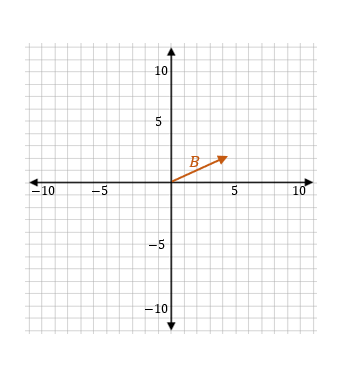How to Understand Vectors: Vectors in Two Dimensions
A vector is a mathematical object that has both magnitude (or size) and direction. Unlike a scalar, which only has magnitude, a vector provides information about how much

Step-by-step Guide to Understand Vectors
Here is a step-by-step guide to understand vectors:
Step 1: Understanding the Basics
- Definition: A vector is a mathematical representation of both magnitude and direction. Think of it as an arrow pointing from one point to another.
- Components: In two dimensions, a vector has two parts: the \(x\)-component and the \(y\)-component, representing horizontal and vertical directions, respectively.
Step 2: Graphical Representation
- Axes Establishment: Start with a two-dimensional Cartesian plane. Label the horizontal axis as ‘\(x\)’ and the vertical axis as ‘\(y\)’.
- Drawing Vectors: Represent a vector as an arrow. The tail starts at the origin \((0,0)\) and the head (or tip) ends at the coordinate given by its \(x\) and \(y\) components.
- Length and Direction: The length of the arrow represents the magnitude of the vector. The direction in which it points gives, well, its direction.
Step 3: Defining Vectors Algebraically
- Notation: Typically, vectors are represented by bold letters or letters with an arrow above, like \(v\) or \(→v\).
- Components: A vector in \(2D\) can be written as \((x,y)\) or \(xi + yj\), where \(x\) and \(y\) are scalars and \(i\) and \(j\) are unit vectors in the \(x\) and \(y\) directions.
Step 4: Vector Operations
- Vector Addition: To add vectors, add their respective components. For vectors \(a = (x₁,y₁)\) and \(b = (x₂,y₂)\), the sum is \(a + b = (x₁+x₂, y₁+y₂)\).
- Vector Subtraction: Similarly, subtract the components: \(a – b = (x₁-x₂, y₁-y₂)\).
- Scalar Multiplication: Multiply each component of a vector by a scalar. For scalar \(k\) and vector \(a = (x,y), ka = (kx, ky)\).
Step 5: Magnitude and Direction
- Magnitude (or length): Given a vector \((x,y)\), its magnitude is found by the Pythagorean theorem: \(|v| = \sqrt{(x² + y²)}\).
- Direction: Using trigonometry, the angle \(θ\) (from the positive \(x\)-axis) is given by \(θ = tan⁻¹(\frac{y}{x})\).
Step 6: Unit Vectors
- Definition: A unit vector has a magnitude of one and points in a specific direction.
- In \(2D\): The primary unit vectors are \(i\) (which points in the positive \(x\)-direction) and \(j\) (which points in the positive \(y\)-direction).
Step 7: Dot Product
- Definition: It’s a way to multiply vectors resulting in a scalar. For vectors \(a = (x₁,y₁)\) and \(b = (x₂,y₂)\), the dot product is given by \(a • b = x₁x₂ + y₁y₂\).
- Orthogonal Vectors: If \(a • b = 0\), then vectors \(a\) and \(b\) are orthogonal (or perpendicular).
Step 8: Practical Applications
- Physics: Vectors are crucial in representing quantities like force, velocity, and acceleration.
- Computer Graphics: Used to describe positions, directions, and more, aiding in the creation of complex visualizations and animations.
Step 9: Beyond the Basics
- Once comfortable with vectors in two dimensions, expand your knowledge to three-dimensional vectors. Dive deeper into vector calculus, and explore concepts like cross-products and curl.
By taking a sequential, layered approach to vectors, you’ll build a robust foundation that can support more advanced mathematical and applied concepts. Vectors, though simple in concept, play a fundamental role in various disciplines, from physics to engineering to computer science. Dive in, explore, and let vectors guide your path through the intricate tapestry of mathematics.
Examples:
Show vector \(B=(4,2)\) in the coordinate plane.
Solution:
- Setting up the Coordinate Plane:
- Draw a set of perpendicular lines, the \(x\)-axis (horizontal) and the \(y\)-axis (vertical). These represent your coordinate plane.
- Mark intervals on each axis, similar to a grid, to denote units.
- Plotting the Vector:
- Start at the origin, the point \((0,0)\).
- Move \(4\) units to the right along the \(x\)-axis. This represents the \(x\)-component of the vector.
- From that point, move \(2\) unit upwards. This represents the \(y\)-component of the vector.
- Draw an arrow starting from the origin to the point you’ve reached, which is \((4,2)\). The arrow represents vector \(B\).

Related to This Article
More math articles
- The Ultimate Adults Algebra Refresher Course (+FREE Worksheets & Tests)
- How to Solve Scientific Notation? (+FREE Worksheet!)
- ACT Math: Everything You Need to Know
- The Ultimate OAA Algebra 1 Course (+FREE Worksheets)
- CBEST Test Facts and FAQs
- How to Divide Rational Expressions? (+FREE Worksheet!)
- Full-Length 8th Grade ACT Aspire Math Practice Test-Answers and Explanations
- Top 10 Tips You MUST Know to Retake the SAT Math
- Empower Your Homeschooling Efforts with ‘Pre-Algebra for Beginners’
- How to Graph a Horizontal or Vertical line?


























What people say about "How to Understand Vectors: Vectors in Two Dimensions - Effortless Math: We Help Students Learn to LOVE Mathematics"?
No one replied yet.